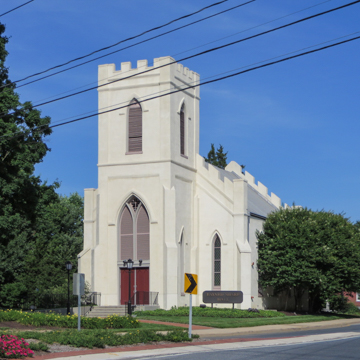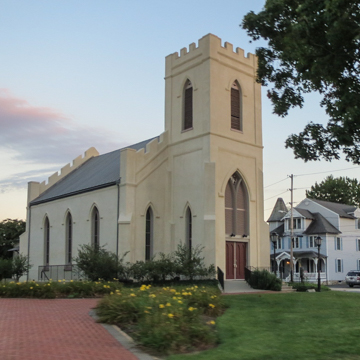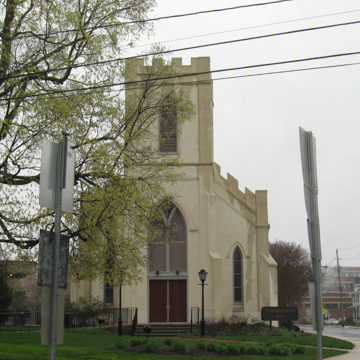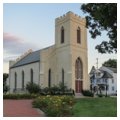You are here
Bayard Sharp Hall
A recent addition to the university's holdings, this was one of the first churches founded as the Episcopal denomination returned to vigor in Delaware under Bishop Alfred Lee. The nave is flanked by buttresses and has a crenellated tower in front. Brick walls were later covered with stucco scored to resemble ashlar. Other Gothic Revival churches of this form exist on the Delmarva peninsula, including St. John's Chapel, Talbot County, Maryland (1835). The architect of St. Thomas is unknown; it might have been the famous Richard Upjohn, with whom a vestryman corresponded in summer 1843, or perhaps the commission ultimately went to the competing architect (not named in the correspondence). About 60,000 “good, well burnt, merchantable bricks” came from the George Evans brickyard on Elkton Road. Philadelphia bricklayer Joseph Hicks agreed to lay them “with all possible dispatch” and to erect buttresses and “front and back battlements.” After World War II, the growing congregation moved to a new facility (1954–1959, Victorine and Samuel Homsey) on S. College Avenue and sold the old church to the town, which used it as a library from 1956 to 1974. Subsequently, there were plans to demolish the dilapidated building, but the university eventually purchased it and undertook a thorough renovation for a performing-arts center (1998–1999, Homsey Architects). Epoxy was injected to strengthen water-damaged walls and all the stucco was replaced.
Writing Credits
If SAH Archipedia has been useful to you, please consider supporting it.
SAH Archipedia tells the story of the United States through its buildings, landscapes, and cities. This freely available resource empowers the public with authoritative knowledge that deepens their understanding and appreciation of the built environment. But the Society of Architectural Historians, which created SAH Archipedia with University of Virginia Press, needs your support to maintain the high-caliber research, writing, photography, cartography, editing, design, and programming that make SAH Archipedia a trusted online resource available to all who value the history of place, heritage tourism, and learning.







